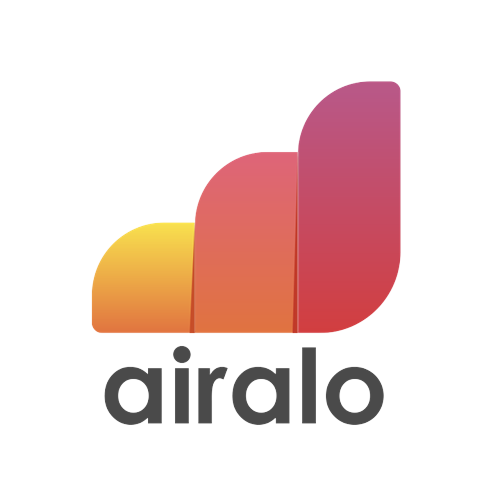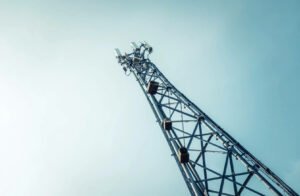Looking for affordable data connectivity solutions to enhance your smart home? Wondering how to stay connected without breaking the bank? Look no further!
In this article, we’ll explore 3 cost-effective options that will keep your smart devices connected and your wallet happy. From reliable Wi-Fi extenders to budget-friendly mesh networks, we’ve got you covered.
Get ready to discover the best connectivity solutions for your smart home without compromising on quality or price. Let’s dive in!
Key Takeaways
- Affordable data connectivity is crucial for cost-effective and reliable internet access in smart homes.
- Understanding the cost implications and requirements of different data connectivity options is important.
- Wi-Fi, Ethernet, and Powerline are affordable options for smart homes, each with their own advantages and considerations.
- Choosing the right data connectivity solution involves evaluating factors such as reliability, speed, stability, and coverage for optimal smart home performance.
The Importance of Cost-Effective Data Connectivity for Smart Homes
You need affordable data connectivity for your smart home to ensure cost-effective and reliable internet access. Understanding the cost of data connectivity solutions is crucial in making informed decisions about your smart home setup.
When it comes to data connectivity, there are several options available, each with its own cost implications. One popular option is a broadband connection, which provides high-speed internet access through a wired connection.
Another option is a cellular connection, where you use your mobile network to connect your smart devices. This option may be more expensive depending on your data plan.
Additionally, some smart home devices require a hub or gateway to connect to the internet, which may come with additional costs.
Understanding Data Connectivity Solutions for Your Smart Home
To fully grasp the various data connectivity solutions available for your smart home, it’s important to understand the different options and their capabilities.
When it comes to maximizing savings and optimizing performance, there are a few key solutions to consider. First, you have Wi-Fi, which is the most common and convenient option. It allows you to connect multiple devices wirelessly, but its range and speed can be limited.
Another option is Ethernet, which provides a more stable and reliable connection, ideal for devices that require high bandwidth.
Powerline adapters are a great choice if you want to extend your network using your home’s existing electrical wiring.
Lastly, cellular connectivity is an option for remote locations or as a backup solution.
Understanding these data connectivity solutions will help you make informed decisions for your smart home setup.
Exploring the Benefits of Affordable Data Connectivity for Smart Homes
Now let’s explore the benefits of affordable data connectivity for your smart home.
By opting for cost-effective smart home connectivity solutions, you can enjoy the convenience and efficiency of home automation without breaking the bank.
Not only will you save money on your monthly expenses, but you’ll also enhance the overall efficiency of your smart home, allowing you to control and monitor various devices seamlessly.
Get ready to experience a more streamlined and cost-effective smart home experience with affordable data connectivity.
Cost-Effective Smart Home Connectivity
When considering cost-effective smart home connectivity, it’s important to explore the benefits of affordable data connectivity for your smart home. With the rise of smart home devices and the increasing demand for affordable home automation, finding cost-effective solutions is crucial.
Affordable data connectivity allows you to connect your smart home devices to the internet without breaking the bank. By using affordable data plans or Wi-Fi connections, you can control and monitor your smart home devices remotely, ensuring convenience and peace of mind.
Additionally, affordable data connectivity enables seamless integration between different smart devices, creating a cohesive and efficient smart home ecosystem. Whether it’s turning off the lights, adjusting the thermostat, or monitoring your security system, affordable data connectivity ensures that your smart home operates smoothly and efficiently, without costing you a fortune.
Enhanced Home Automation Efficiency
You can significantly enhance the efficiency of your home automation by utilizing affordable data connectivity, which offers numerous benefits for smart homes.
Maximizing automation in your smart home not only saves you time and effort but also helps reduce energy consumption. With the right data connectivity solutions, you can seamlessly integrate various devices and systems in your home, allowing them to communicate and work together efficiently. This means that you can automate tasks such as turning off lights when no one is in the room or adjusting the temperature based on occupancy.
How to Choose the Right Data Connectivity Solution for Your Smart Home
To make an informed decision, consider the reliability of each data connectivity solution for your smart home. When choosing reliable, affordable connectivity options, optimizing smart home performance is key. Here are three factors to consider:
- Speed: Look for a data connectivity solution that offers high-speed internet to ensure smooth and fast communication between your smart devices.
- Stability: Choose a solution that provides a stable connection, minimizing the chances of interruptions or disconnections that could affect the functionality of your smart home.
- Coverage: Ensure that the data connectivity solution you choose offers wide coverage throughout your home, allowing your smart devices to connect seamlessly from any corner.
Comparing Different Affordable Data Connectivity Options for Smart Homes
When it comes to choosing the right data connectivity option for your smart home, it’s important to consider the pros and cons of each option.
There are various affordable options available that can help you achieve a cost-effective solution. By comparing different options, you can find the one that suits your needs and budget while ensuring a reliable and seamless data connection for your smart home devices.
Pros and Cons
Consider the advantages and disadvantages of various affordable data connectivity options for your smart home. When it comes to cost-saving measures, there are a few options available, each with its own limitations and drawbacks.
Here are three popular choices to consider:
- Wi-Fi:
Advantages: Easy to set up, widely available, supports multiple devices.
Drawbacks: Limited range, potential interference from other devices, higher power consumption. - Ethernet:
Advantages: Faster and more reliable than Wi-Fi, secure connection, no interference.
Drawbacks: Limited mobility, requires cables and installation, may not be available in all areas. - Powerline:
Advantages: Uses existing electrical wiring, easy to set up, good range.
Drawbacks: Speed can be affected by electrical noise, performance may vary, limited scalability.
Cost-Effective Options
For a cost-effective solution, consider the Wi-Fi and Powerline options for your smart home.
When it comes to cost-effective internet options, these two options are great budget-friendly connectivity solutions.
Wi-Fi is a popular choice for smart homes as it allows wireless connectivity to multiple devices. It offers convenience and flexibility, allowing you to control your smart devices from anywhere in your home.
On the other hand, Powerline technology uses your existing electrical wiring to transmit data signals. This eliminates the need for additional wiring or drilling holes in your walls. It provides a reliable and stable connection, making it a suitable option for larger homes or areas with weak Wi-Fi signals.
Both options offer affordable connectivity solutions for your smart home, so you can enjoy the benefits of a connected home without breaking the bank.
Maximizing Efficiency With Budget-Friendly Data Connectivity Solutions
Save money and streamline your smart home setup with these 5 budget-friendly data connectivity solutions:
- Use Wi-Fi smart plugs: These affordable devices allow you to control your appliances remotely and optimize data usage by scheduling their operation.
- Invest in a smart thermostat: By regulating the temperature of your home more efficiently, you can save on energy costs while enjoying a comfortable living environment.
- Opt for a mesh Wi-Fi system: This cost-effective solution ensures reliable internet coverage throughout your home, eliminating dead zones and maximizing connection speeds.
By implementing these budget-friendly automation systems and optimizing data usage, you can enhance the efficiency of your smart home without breaking the bank.
With these solutions, you’ll not only save money in the long run but also enjoy the convenience and comfort that a smart home offers.
Tips for Setting Up Affordable Data Connectivity in Your Smart Home
Maximize affordability and connectivity in your smart home by utilizing these essential tips.
When setting up your smart home, it’s important to consider budget-friendly connectivity options and optimize data usage.
One tip is to choose a reliable and cost-effective internet service provider that offers affordable plans with high data allowances.
Another option is to take advantage of mesh Wi-Fi systems, which provide seamless coverage throughout your home without the need for expensive extenders.
Additionally, consider using smart devices that are compatible with low-power wireless protocols like Zigbee or Z-Wave, as they consume less data compared to devices that use Wi-Fi.
Furthermore, you can optimize data usage by setting up schedules for your smart devices to limit their online activity during off-peak hours.
Overcoming Common Challenges in Implementing Affordable Data Connectivity for Smart Homes
To overcome common challenges in implementing affordable data connectivity for your smart home, you can follow these effective strategies:
- Choose the right connectivity option: Research and compare different connectivity options such as Wi-Fi, Ethernet, or cellular to find the one that best suits your needs and budget.
- Optimize your network: Ensure that your Wi-Fi router is placed in a central location, upgrade to a more powerful router if needed, and consider using Wi-Fi extenders to maximize coverage.
- Utilize data-saving features: Take advantage of data-saving features on your smart devices, such as scheduling updates during off-peak hours and setting data limits for each device.
By maximizing savings and overcoming limitations, you can implement affordable data connectivity in your smart home without compromising on performance.
With the right strategies in place, you can enjoy a connected home that’s both cost-effective and efficient.
Enhancing Security With Affordable Data Connectivity Solutions for Smart Homes
To ensure the safety of your smart home, you need to prioritize enhancing security with affordable data connectivity solutions. With the increasing number of connected devices in your home, it’s crucial to protect your personal information and safeguard your privacy.
One way to do this is by using encryption protocols and secure authentication methods to prevent unauthorized access to your smart devices and data. Additionally, you can enhance privacy by regularly updating and patching your smart home devices to address any security vulnerabilities.
Another benefit of affordable data connectivity solutions is improving energy efficiency. By integrating smart energy management systems, you can monitor and control your energy usage, optimizing it for cost savings and reducing your environmental impact.
Prioritizing security and privacy while also improving energy efficiency will ensure a safe and efficient smart home experience.
Future Trends in Affordable Data Connectivity for Smart Homes
Get ready to embrace the future of affordable data connectivity for your smart home!
As technology continues to advance, new emerging connectivity technologies are on the horizon. These innovative solutions won’t only enhance the connectivity of your devices but also offer cost-effective options for creating a robust home network.
Stay tuned to discover the exciting trends that will shape the future of data connectivity in your smart home.
Emerging Connectivity Technologies
You’ll be excited to learn about the emerging connectivity technologies that will revolutionize affordable data connectivity for your smart home. These future trends are set to transform the way you interact with your devices and enhance your overall smart home experience.
- 5G Connectivity: With lightning-fast speeds and reduced latency, 5G technology promises a seamless and ultra-responsive smart home experience. You’ll be able to stream high-definition content, control your devices remotely, and enjoy real-time communication effortlessly.
- Internet of Things (IoT): The IoT is expanding rapidly, connecting a wide range of devices and enabling them to communicate with each other. This interconnectedness allows for more efficient automation and personalized experiences in your home.
- Mesh Networks: Mesh networks use multiple interconnected nodes to extend the range of your Wi-Fi signal and eliminate dead zones. This technology ensures reliable connectivity throughout your entire home, enabling smooth integration of all your smart devices.
These emerging connectivity technologies are paving the way for a future where affordable data connectivity is the norm in every smart home. Get ready to embrace the exciting possibilities they bring!
Cost-Effective Home Network
You can achieve a cost-effective home network by implementing these future trends in affordable data connectivity for your smart home. With the increasing demand for affordable home automation, there are various low-cost networking options available that can help you create a reliable and efficient network without breaking the bank.
One of the key future trends in affordable data connectivity for smart homes is the use of powerline adapters. These adapters allow you to utilize your existing electrical wiring to transmit data signals throughout your home, eliminating the need for costly Ethernet cables or Wi-Fi extenders. Additionally, mesh networking systems are becoming more affordable and popular. These systems use multiple access points to create a seamless network, ensuring strong and reliable connectivity throughout your home. Lastly, the advancement of Wi-Fi technology, such as the introduction of Wi-Fi 6, provides faster and more efficient data transmission, allowing for a more cost-effective home network.
To help you understand these trends better, here is a table summarizing the features and benefits of each option:
| Low-Cost Networking Option | Features | Benefits |
|---|---|---|
| Powerline Adapters | Utilizes existing electrical wiring; Easy to install | Cost-effective solution; No need for additional wiring |
| Mesh Networking Systems | Multiple access points; Seamless network coverage | Reliable and strong connectivity throughout the home |
| Wi-Fi 6 | Faster and more efficient data transmission | Improved network performance; Better support for multiple devices |
Frequently Asked Questions
What Are Some Potential Drawbacks or Limitations of Affordable Data Connectivity Solutions for Smart Homes?
Potential drawbacks of affordable data connectivity solutions for your smart home include potential security risks and impact on network speed and bandwidth. It’s important to consider these factors when choosing the right solution for your home.
How Can I Ensure That the Affordable Data Connectivity Solution I Choose Is Reliable and Offers Good Performance?
To ensure reliable and high-performance connectivity, follow these tips: troubleshoot common issues, check compatibility with your smart home setup, read reviews, consider speed and range requirements, and choose a reputable provider.
Are There Any Specific Compatibility Issues to Consider When Selecting an Affordable Data Connectivity Solution for My Smart Home?
When selecting an affordable data connectivity solution for your smart home, it’s important to consider compatibility challenges. Potential risks may arise if the solution isn’t compatible with your devices or if it lacks the necessary features for seamless integration.
Can Affordable Data Connectivity Solutions Support All the Devices and Appliances in My Smart Home, or Are There Any Restrictions?
Affordable data connectivity solutions can support most devices and appliances in your smart home, but there may be some restrictions. It’s important to consider cost-effective options and ensure network coverage for all your devices.
Are There Any Additional Costs or Fees Associated With Implementing and Maintaining Affordable Data Connectivity Solutions for Smart Homes?
You may incur additional costs or fees when implementing and maintaining affordable data connectivity solutions for your smart home. Troubleshooting common issues can help mitigate potential challenges in connectivity.
Conclusion
So, there you have it – affordable data connectivity solutions for your smart home. With these options, you can enjoy the convenience and efficiency of a connected home without breaking the bank.
But remember, technology is always evolving, so staying up to date with the latest trends and advancements in affordable data connectivity will ensure your smart home remains cutting-edge.
So, why wait? Start transforming your home into a tech-savvy haven today! Isn’t it time to embrace the future?






